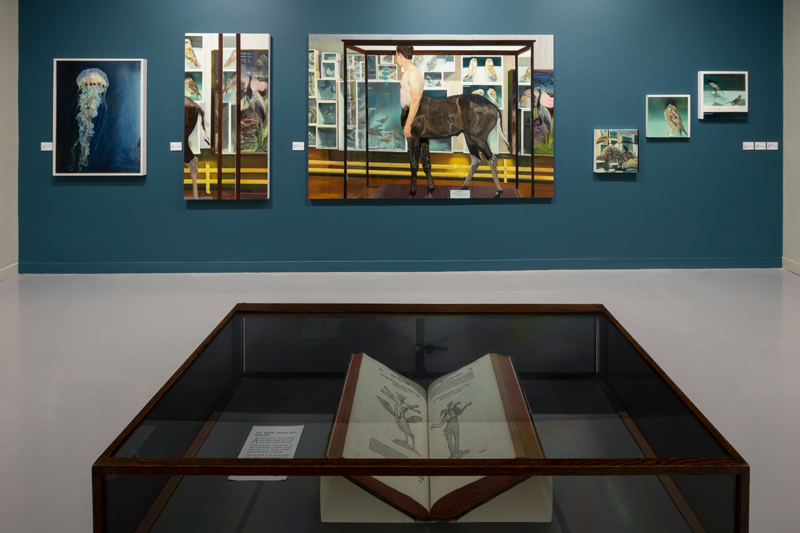
The newest exhibition in the Royal Hibernian Academy (RHA) Gallery is Dominique Crowley’s Monstrorum. The collection sits in the Ashford Gallery — one of the first rooms visible from the entrance — and consists of several bodies of work. Most of the pieces are set in resin and each one is explosive in colour and imagination. The concept of the collection is inspired by Ulisse Aldrovandi’s 1642 book, Monstrorum Historia. The book explores the history of monsters and other mythical creatures, and it is part of a larger encyclopaedia on natural history. The illustrations in it are both otherworldly and incredibly precise, and it is this relationship between myth and science that Crowley explores in her own Monstrorum.
Crowley’s art is better understood with the knowledge of her background. With degrees in medicine, child health and medical toxicology, Crowley is widely versed in scientific discoveries and explanations for anomalies. After a career in public health she pursued her love of art and eventually earned a Master of Fine Arts degree in the National College of Art and Design (NCAD). Her work illustrates an intersection between the nature of scientific discovery and the inherent beauty of this accumulation of knowledge. Monstrorum tells the story of historical research and dedication towards finding more beauty and more oddities in the history of the world.
Crowley creates a fictional natural history museum in the Ashford Gallery that reflects her own personal interest in historical descriptions of the natural world. It combines the objectivity of natural science with the subjectivity of the art and imagination that fuels it. One of the most notable pieces in her collection, and definitely a work that stands out in the room, not merely for the sheer size of it, is Hibernica Centaurus. The painting — like most in this collection — is created on braced wood panels with oil and acrylic resin. It depicts a centaur inside a closed space of a museum exhibition. The centaur faces away from us and instead, stares at familiar species in the same predicament — different types of birds. The centaur is an entirely mythical creature but its placement alongside owls and herons brings forth Crowley’s proposition: that our knowledge of the natural world is derived from our fear and desire to learn about what we do not know. Her exhibition suggests the equal importance of mythical monsters and real-life creatures. In placing them side-by-side, she conveys their collaboration in discovery and exploration. Her work could be perceived in the sixteenth century as an honest depiction of natural history but its presence in modern art emphasises the closeness between reality and fiction — even in the scientific world.
Other paintings in the exhibition reflect different creatures on display: basilisks encased in glass, cockatrices behind bars, fish in tanks. There are multiple works of various types of birds and the vibrancy of each painting invites and evokes interest. The exhibition is full of contrast: between science and nature, art and reality, freedom and entrapment, beauty and performance. The use of resin emphasises each glass jar, vial, and tank used to store each animal ‘on display’ whilst also accentuating the brightness and the colourful possibility of each discovery. The work remembers the past methods of discovery with admiration, but also with cynicism and brings to light the significance and consequence of scientific findings to the natural world.
Crowley describes her style as disrupted realism. The absence of brushstrokes underneath the resin, and the saturated vibrance of each work brings her paintings to life, and Monstrorum evokes thought and intrigue about a topic that Crowley is clearly knowledgeable about to a high degree. With paintings on sale from €4,000 to €20,000, Monstrorum will be at the RHA until February 11th, and it is truly not one to miss.






